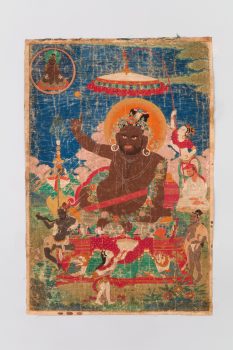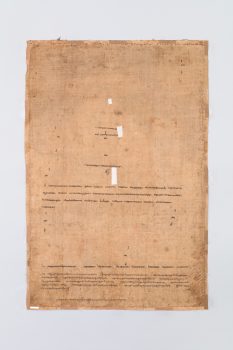Gongkar Chode Monastery, U Province, Central Tibet
ca. 1659-1671


Gongkar Chode Monastery, U Province, Central Tibet
ca. 1659-1671


Virupa is renowned as the eighth-century Indian master of tantric teachings that were transmitted to Tibet and became the defining instructions for Tibet’s Sakya Buddhist tradition. He left a prestigious post as a monastery official to become a wondering yogi who mastered tantric practices and became a mahasiddha. He is known for his seemingly magical abilities to intervene in otherwise ordinary events.Virupa’s gesture—a raised hand with a finger pointing up to the sun—refers to an episode when he was on an epic drinking spree and agreed with the tavern proprietor to settle the bill at sunset. He then used his great meditative powers to stop the sun in its course until after several days without night the local ruler, fearful of a possible drought, paid his tab.
A religious movement that originated in India around the fifth to seventh century with sacred writings and esoteric teachings and practices transmitted from teacher to student through initiation. These remain an important part of Hinduism and Buddhism today.
The passing down of authentic Buddhist teachings from a teacher to a disciple or student, often in the form of a text in a ritualistic context.
The transmission of teachings from one generation to the next, from teacher to student, traced all the way back to the Buddha without interruption. A complete lineage is essential in Tantric Buddhist practices as it makes the blessings of the teaching more powerful.
Himalayan art includes portraits of legendary and historical humans, including accomplished religious teachers (lamas), the Buddha’s original disciples (arhats), and spiritually accomplished tantric masters (mahasiddhas).
Today, Tibetans primarily inhabit the Tibetan Plateau, situated between the Himalayan mountain range and the Indian subcontinent to the west, Chinese cultural regions to the east, and Mongolian cultural regions to the northeast. During the 7th to 9th century, Tibetan rulers expanded their empire across Central Asia, and established Buddhism as the state religion.
Get the latest news and stories from the Rubin, plus occasional information on how to support our work.